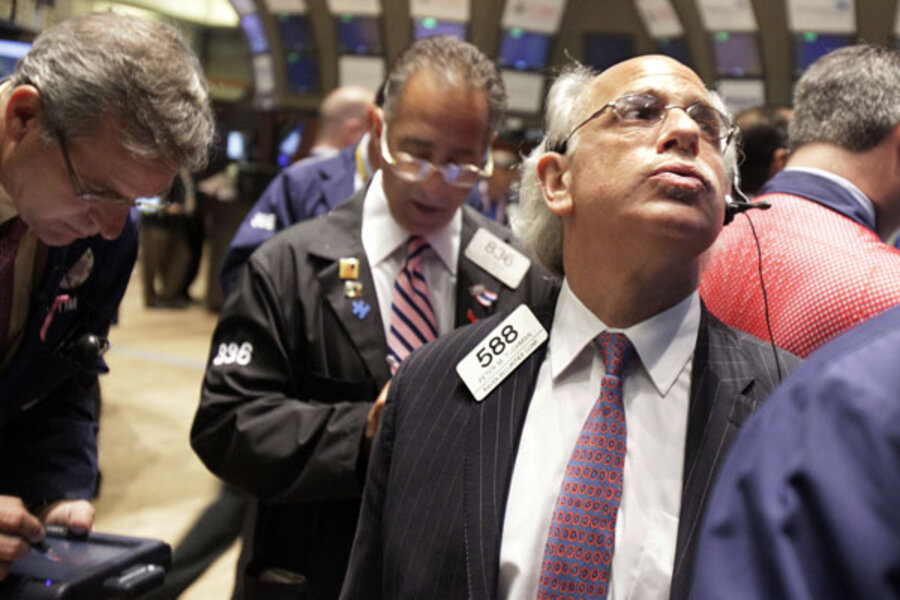Why more government debt won't fix the economy
Loading...
Ouzilly, France – The big news yesterday was that the Fed decided to do about what we expected – not much.
Bloomberg has the report:
Federal Reserve officials decided to reinvest principal payments on mortgage holdings into long-term Treasury securities, making their first attempt to bolster growth since March 2009 to keep the slowing US economy from relapsing into recession.
“The pace of economic recovery is likely to be more modest in the near term than had been anticipated,” the Federal Open Market Committee said in a statement in Washington. “To help support the economic recovery in a context of price stability, the Committee will keep constant the Federal Reserve’s holdings of securities at their current level.” The Fed retained a commitment to keep its benchmark interest rate close to zero for an “extended period.”
With growth weakening in the second quarter and company job gains in July falling short of estimates, today’s step signals that risks of a downturn have increased enough for the Fed to delay its exit from unprecedented stimulus. Chairman Ben S. Bernanke told Congress last month that the Fed was “prepared to take further policy actions as needed.”
The Fed’s last move in favor of easier policy came in March 2009, when policy makers agreed to buy $300 billion of Treasuries and more than double planned mortgage-debt purchases to $1.45 trillion while starting a pledge to keep the benchmark rate close to zero for an “extended period.”
So, the Fed has made another mini-move. And the markets reacted appropriately, in a mini-way. Stocks went down a little – minus 54 on the Dow. Gold went down a bit too – off $4, to bring the price to $1,198.
Barron’s was not wrong. Just early. You’ll recall the newspaper says the Fed will “Print $2 trillion.” Yes, it probably will. But not now…not yet. Not as long as the Treasury can finance federal deficits by borrowing and the stock market hasn’t collapsed.
But the Fed is in a trap of its own making. It doesn’t really understand what is going on. It thinks there is a problem in the economy caused by consumers who are unwilling to spend. It believes it should use its policy tools to help pry the money out of their pockets. Trouble is, consumers don’t have any money in their pockets. And if they did have some, they wouldn’t want to spend it.
Of course, the Fed knows this much. But they think that if they can get people spending again, the economy will take off, employment will rise, incomes will go up and everything will be hunky dory again.
They don’t seem to wonder why – if things were so hunky dory in the bubble years – there was a crisis in the first place. Never once have we heard anyone of them – not Bernanke, Summers, or Geithner – explain that the private sector had run up too much debt (largely because of their own economic policies)…and that now it is paying the price.
Instead, they think the economy is sick and that they are all Dr. Schweitzers. The whole thing – meaning, the body of ideas, theories, prejudices, plans and programs of the financial authorities – is really asinine. Which is what is really interesting about this episode in history. So many very smart people have come to believe such absurd things. It’s a marvel. And marvelously entertaining to watch. What will they say and do next?
They don’t have much choice. Their silly ideas drive them into silly positions…from which there is no gracious exit. The economy is correcting from too much debt. They’re determined to stop the correction with the only thing they have to offer – more debt. And funny money, of course.
They’re not stupid, though. They also know that they can’t go too far or they will do even more damage than they’re doing now. So, they’ll save that disastrous step for later…when they’re really desperate. Then, we’ll see them print $2 trillion. Or print $3 trillion. Or more.
In the meantime, it’s “muddle onwards” for the authorities! One misstep after another. Headlong into one trap…then onto the next!
Add/view comments on this post.
------------------------------
The Christian Science Monitor has assembled a diverse group of the best economy-related bloggers out there. Our guest bloggers are not employed or directed by the Monitor and the views expressed are the bloggers' own, as is responsibility for the content of their blogs. To contact us about a blogger, click here. To add or view a comment on a guest blog, please go to the blogger's own site by clicking on the link above.





